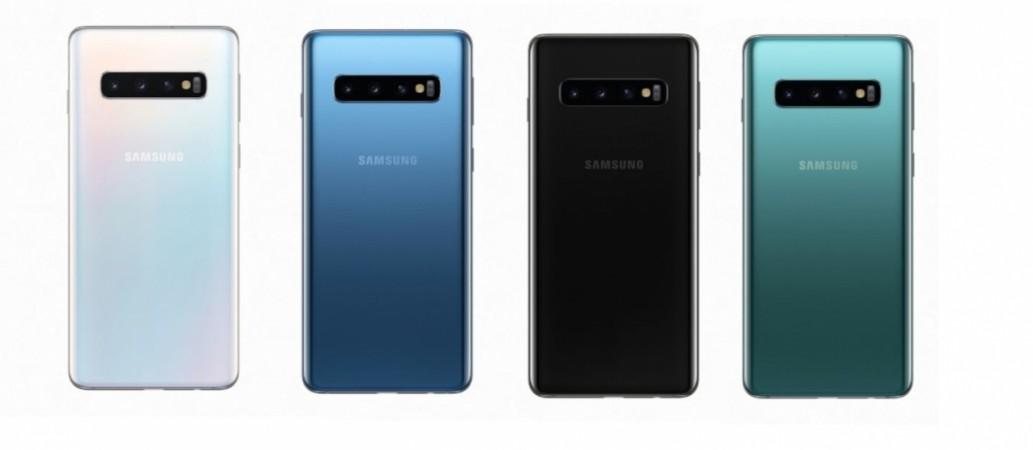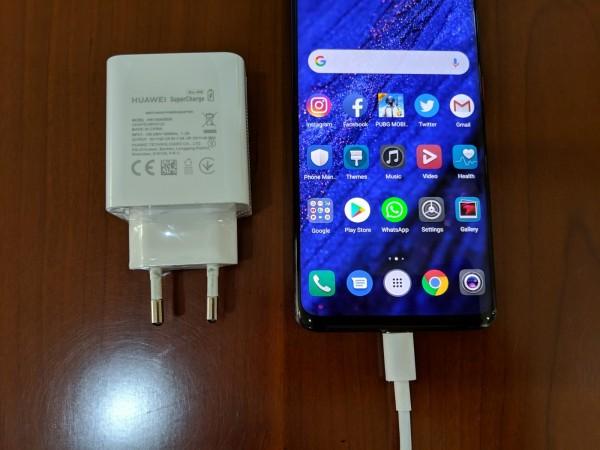After rumours and speculations, Samsung finally launched its Galaxy S10-series at an event in San Francisco. The new flagship series includes the standard duo, Galaxy S10 and Galaxy S10+, along with a new model Galaxy S10e, the company's response to iPhone XR. The Galaxy Fold was also unveiled to show the futuristic foldable smartphone technology in flesh, but the Galaxy S10+ still reigns the high ranks.
Samsung Galaxy S10+ is touted as the most powerful Android smartphone with top-of-the-line features starting at $999.99. It is a solid competitor in its segment, where flagships like iPhone XS Max and Huawei Mate 20 Pro are already present. If you're an Android fanboy, it is natural to be confused between the Samsung Galaxy S10+ and Huawei Mate 20 Pro, which is why here's a comparison of both premium smartphones.
It must be noted that the Mate 20 Pro was launched last year and an upgrade to that model is expected later this year. Despite being 2018 flagship, Huawei Mate 20 Pro throws a stiff competition to the new Samsung phone.
Design
Samsung has really gone far and beyond traditional designing to make its Galaxy S10+ stand out in the ground. The Galaxy S10+ features a premium ceramic shell (on a special edition) and glass-and-metal premium shell on the back with a curved display and punch-hole dual cameras on the front. This allows Samsung to achieve a higher body-to-screen ratio by completely eliminating the top and side bezels. There's a slim bezel at the bottom, but that's rarely a visual distraught.

The triple rear cameras are positioned horizontally in a single module at the back and the volume and power buttons occupy their regular positions on the phone.
Moving on to the rival, Huawei Mate 20 Pro's design is eye-catching, but still feels 2018. The triple rear cameras placed in a square box with LED flash is a nice touch and the premium glass unibody with almost invisible fine lines for better grip. The display area feels a bit ageing due to the presence of the notch and the bezel at the bottom appears to be thicker than that of the Samsung phone.
Both phones are visually appealing in their own ways. Samsung takes away some limelight with its punch-hole cameras, but the Mate 20 Pro doesn't look too bad for a 2018 smartphone aiming to thrive in 2019. We are yet to get our hands on the Samsung Galaxy S10+, but we can assure you the Mate 20 Pro is quite compact and handy despite its large screen factor.
Both phones have IP68 certification, which means you won't have to worry about dust or water splashes.
Display
Both phones here have exceptional displays. Huawei Mate 20 Pro comes with a 6.39-inch OLED display with 2K+ resolution and 538ppi. Samsung Galaxy S10+, on the other hand, features a 6.4-inch Quad HD+ AMOLED display with 522ppi. The difference in pixel distribution means the Mate 20 Pro will have a slight edge over the Galaxy S10+, but the difference won't be visible to naked eye. Both phones are great for graphic-intense gaming and watching videos in the best resolution.

Camera
Both phones have triple rear camera setup, but the Galaxy S10+ offers two cameras on the front unlike the Mate 20 Pro's single lens for selfies.
The Mate 20 Pro's Leica triple camera setup includes a 40MP wide angle lens with f/1.8 aperture, 20MP ultra wide-angle lens with f/2.2 aperture and an 8MP telephoto lens with f/2.4 aperture – complete with Master AI, lossless 5x zoom, Super Macro Mode, Night Mode, 4K recording, AI Colour and Background Blur video modes and much more. The front camera has a 24MP sensor with f/2.0 aperture.

As for the Galaxy S10+, the rear setup includes 12MP primary sensor with PDAF, f/2.4 aperture and OIS, paired with 12MP wide-angle dual pixel AF sensor and 16MP ultra-wide lens with up to 10X optical zoom. The front camera combines a 10MP dual pixel lens with f/1.9 aperture and an 8MP RGB Depth sensor with f/2.2 aperture.
We've seen the Mate 20 Pro's camera performance first hand and it has by far one of the best shooters. By looking at Samsung's camera specs, the Mate 20 Pro seems to have a better rear camera while the Galaxy S10+ could take the lead in selfies.
Performance
Samsung surely has impressive specs on paper. It comes paired with Snapdragon 855 chipset or Exynos 9820 depending on the markets, which is paired with 8GB/12GB RAM and 128GB/512GB/1TB storage options. The handset also runs the latest Android 9.0 Pie-based One UI.

Huawei Mate 20 Pro might not lag far behind. It has the capable 7nm Kirin 980 chipset paired with 6GB RAM, 128GB storage and Android Pie-based EMUI 9. Samsung Galaxy S10+ looks good on paper, but yet to be tested. We've reviewed the Mate 20 Pro and it plays well on all aspects. If you have to pick one, Samsung seems to have a slight edge and advantage of new chipset and higher RAM.
Battery
Huawei Mate 20 Pro's battery is one of its strongest suits. There's a 4,200mAh battery with 40W SuperCharge and AI power management for day-long heavy usage. The handset also comes with a quick wireless charger, which is a nice accessory to have. But the most interesting feature of the Mate 20 Pro is its reverse wireless charging capability, which can charge other Qi-enabled phones just by placing it over the Mate 20 Pro's back.

Samsung Galaxy S10+ comes with a 4,100mAh battery with fast wired and wireless charging. We doubt the fast charging is as good as Huawei's SuperCharge, but the handset does take a cue from Huawei in offering wireless PowerShare reverse charging feature.
Add-ons
Huawei Mate 20 Pro is a feature-packed phone, well ahead of its time. The handset has some unseen features in its camera, like Master AI, SuperMacro, AI cinema mode in video, wide-angle capturing at its best and a reliable Night mode. The handset comes with an in-display fingerprint scanner and a 3D facial unlock system, both of which work seamlessly and securely. There are no visible speaker grilles, but the sound comes out of the USB Type-C port, an achievement in seamless designing. The UI also has a system-wide dark mode, which further preserves battery.
On the other hand, Samsung Galaxy S10+ comes with an ultrasonic fingerprint scanner, advanced face unlock, AI integration in camera and all standard connectivity features.
Verdict
Samsung Galaxy S10+ is priced starting at $999, which roughly translates to Rs 71,000. The phone's pricing in India is yet to be revealed, which we guess could be close to Rs 80,000 mark. But the Huawei Mate 20 Pro comes at Rs 69,990 and there's an offer where buyers can get a wireless charger worth Rs 3,990 for free. Price-wise, Huawei makes a better offer than Samsung and the Mate 20 Pro is already available in India, unlike the Galaxy S10+. But if you have a few extra bucks to spare, then the Galaxy S10+ makes a strong argument.
In terms of specs, Huawei Mate 20 Pro and Samsung Galaxy S10+ are pretty much alike. Samsung gains an edge with dual front cameras that are punched inside the display, but Huawei has its own strengths like a powerful rear camera and a feature-packed battery that lasts long.

















